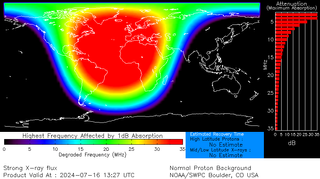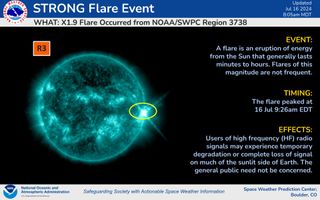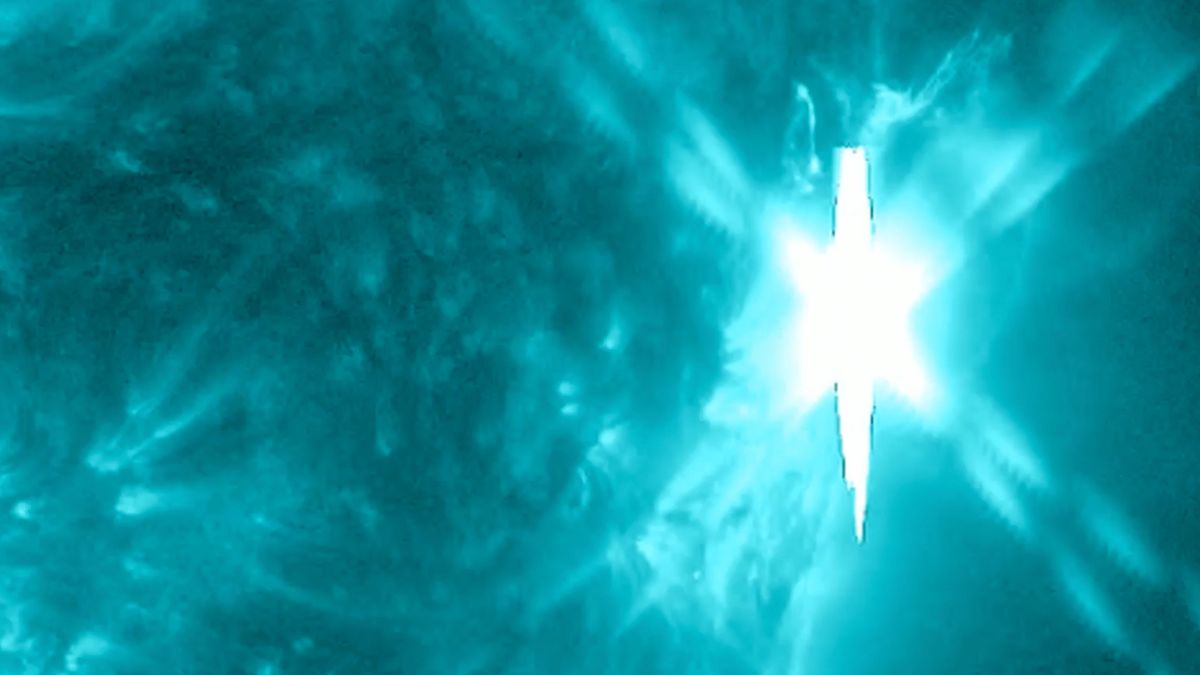The sun continues firing off solar flares during what has been a period of intense activity.
Sunspot AR3738 might be making its exit as it rotates out of our view on the sun’s western limb, but not before firing off a powerful X-class solar flare, the strongest of its kind.
The solar flare from sunspot AR3738 occurred Tuesday morning (July 16) at 9:26 a.m. EDT (1326 GMT). A shortwave radio blackout in conjunction with the latest event was reported over mostly the Atlantic Ocean and also noted across much of Africa, Europe, and parts of North and South America.
Solar flares are powerful blasts of electromagnetic radiation that explode outward from sunspots on the sun’s surface. These flares are sorted into lettered groups based on their size. X-class flares like the two this week are the most powerful group, followed by M, C and the weakest, B. For each of these classes, numbers from 1 to 10 (and beyond for X-class flares) are assigned based on each flare’s relative strength.
When solar flares erupt, the radiation they emit travels to Earth at the speed of light where it ionizes (electrically charges) the upper atmosphere upon arrival. This electrical charge means high-frequency shortwave radio signals, used for communication, have a much denser environment to pass through. As radio waves travel through this dense, ionized layer, they lose energy due to increased collisions with electrons, which can degrade or completely absorb the radio signals.

NOAA’s Space Weather Prediction Center (SWPC) reported that there were radio signatures that indicated the flare “likely” fired off a coronal mass ejection (CME).
However, because of the sunspot’s current location, forecasters do not anticipate Earth to be along the path for a direct impact. SWPC said that its forecasters will continue to keep an eye out in case there’s any other information that comes in from coronagraph imagery that will be assessed as it becomes available.

Spaceweather.com noted that the location of the large AR3738 is nearing what they call “the danger zone,’ where the Parker Spiral, a spiral-shaped area of the sun’s magnetic field, connects the sunspot with Earth. As the massive sunspot rotates over the western edge, or limb, of the sun, it enters this location that magnetically joins it to our planet. A high-speed acceleration of charged particles, or protons, from the sunspot can hop on this superfast space freeway and catch a ride from the sun to Earth.
We saw this happen back in May with the historic AR3664 that created worldwide auroras. All eyes will remain on this solar exploder for any future activity that could bring another whirl of protons and electrons spiraling our way.





















Discussion about this post